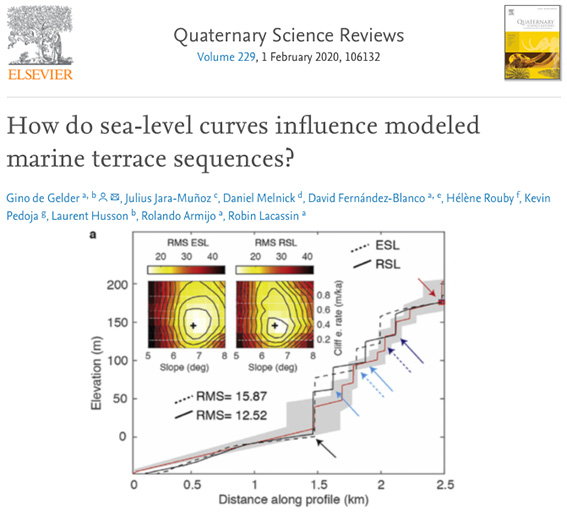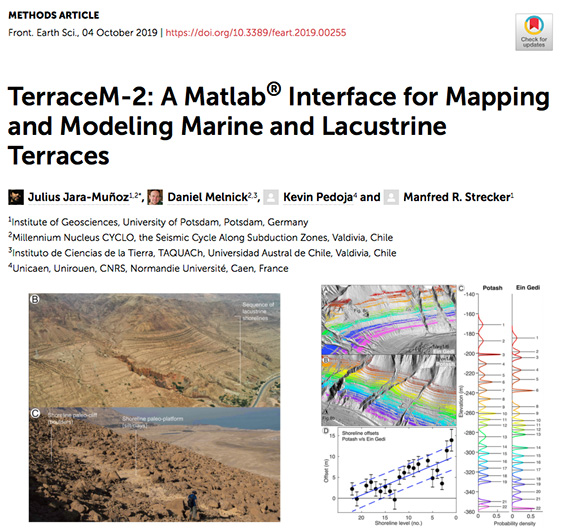Wednesday 22 April 2020 kl. 17:50
Using bathymetric data and novel mapping and modeling techniques, we studied a submerged sequence of marine terraces in the Bay of Biscay with the objective to identify the distribution and morphologies of submerged marine terraces and the timing and conditions that allowed their formation and preservation.
link:
Wednesday 22 April 2020 kl. 17:45
Here we explore the influence of Quaternary SL curves on the geometry of marine terrace sequences using landscape evolution models (LEMs) available in TerraceM-2.
1) A landscape evolution modeling approach enriches marine terrace analyses.
2) Sea-level curve shapes set the RMS misfit between modeled and observed sequences.
3) A higher sea-level curve resolution generally leads to more modeled terraces.
4) The geometry of old, slow uplifting sequences is very sensitive to sea-level noise.
5) Younger, faster uplifting sequences are favorable for landscape evolution modeling.
link:
Wednesday 22 April 2020 kl. 17:35
The new TerraceM-2 version include modelling analysis and mapping routines to performe comprehensive analyses of marine terraces. This work was published in December 2019 in Frontiers in Earth Sciences, and is available for download in this site.
1) Improved mapping interface based in swath profiles, include also a Surface Classification Model interface to semiautomatically map marine terrace surfaces using slope and roughness
2) Analysis tools, such as uplift rate calculator, using diverse methods, projection of results along customized profiles, the world marine terraces database of Pedoja et al. (2014) for quick comparison and many other tools...
3) Numerical modelling routines, include a Landscape Evolution Model, and Elastic Dislocation Model to estimate the age of the terrace levels, model the hydrodynamic conditions during their development and variable or constant uplift rate conditions. Dislocation models allows determining fault slip rates from deformed marine terrace sequences.
link:









